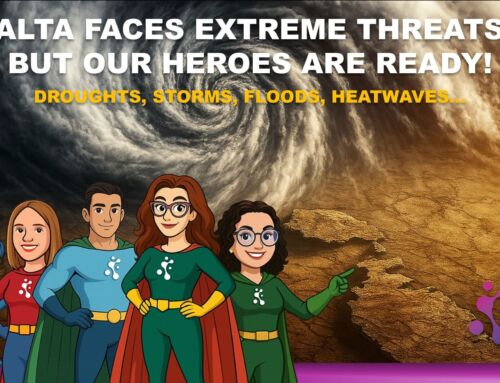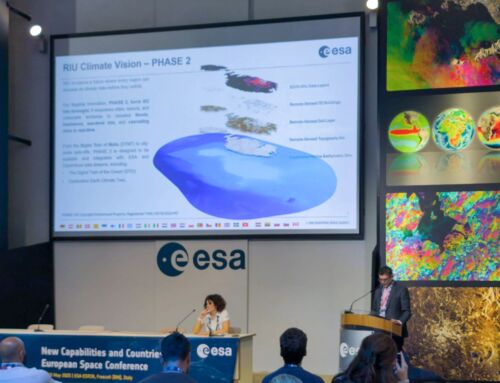In a world grappling with the escalating impacts of climate change, one of the starkest realities emerging today is the growing isolation of the European Union (EU) in its ambitious climate objectives. While the EU has dedicated itself to achieving climate neutrality by 2050, other major powers, including the United States, China, India, Brazil, and Russia, have shown varying levels of commitment that fall far short of the urgency demanded by climate science. With the possibility of a Trump return to the White House, these fragmented ambitions risk derailing global progress on climate action, intensifying the EU’s position as an “island” in the fight against climate change.
In this editorial, we examine the geopolitical divide on climate action, analyze the threats posed by a potential Trump presidency, compare the approaches of other major emitters, and assess the precarious position of the EU as it attempts to lead the world in addressing this critical challenge.
The EU: A Climate Pioneer in an Isolated Position
The EU has long championed rigorous climate policies, setting a precedent for global action. Through initiatives like the European Green Deal and the Carbon Border Adjustment Mechanism (CBAM), the EU has not only aimed for emissions reductions within its borders but also encouraged cleaner practices worldwide by taxing carbon-intensive imports.
However, the EU’s climate efforts face significant limitations due to its relatively small share of global emissions, around 8%, and the unyielding policies of other major polluters. Even as Europe pushes forward with renewable energy investments, strict carbon pricing, and commitments to reduce emissions by at least 55% by 2030, its influence is curtailed by the lack of similar ambition from the world’s largest emitters.
The EU’s leadership, while commendable, has created tensions in trade and diplomacy. Policies like CBAM have sparked concerns among trading partners, with countries like India and China warning that the EU’s measures could be economically restrictive and damaging to industries. The EU’s climate initiatives risk being seen not as a global imperative but as regional regulations that could penalize developing nations without providing adequate support.
The Trump Factor: A Looming Threat to Global Climate Progress
The potential return of Donald Trump to the U.S. presidency poses one of the most significant threats to international climate action. Trump’s stance on climate policy, as articulated through his 2024 campaign, centres on the revival of fossil fuel industries, reduction of environmental regulations, and likely withdrawal from the Paris Agreement. During his previous term, Trump’s administration rolled back over 100 environmental protections, exited the Paris Climate Accord, and championed domestic fossil fuel production as a path to “energy independence“.
A renewed Trump presidency would likely halt or reverse U.S. federal support for clean energy initiatives like the Inflation Reduction Act (IRA), which has directed billions toward renewable energy and green infrastructure. This action would undermine global climate financing, potentially reducing the funding available to developing nations for adaptation and mitigation efforts. Internationally, Trump’s potential exit from the Paris Agreement would erode U.S. credibility in climate negotiations and weaken multilateral frameworks, diminishing the trust and collaborative spirit needed for coordinated global action.
China and India: Climate Action Through the Lens of Economic Growth
China, the world’s largest emitter, represents the most significant challenge and opportunity in global climate action. While China has pledged to peak emissions by 2030 and reach carbon neutrality by 2060, it remains heavily reliant on coal. It continues to invest in coal infrastructure domestically and abroad. Despite becoming a leader in renewable energy investment, China’s dependency on fossil fuels raises questions about its long-term climate trajectory. China’s Belt and Road Initiative, which funds infrastructure projects globally, often supports carbon-intensive energy developments, adding to concerns about China’s overall climate impact.
India, another major emitter, has committed to generating 50% of its energy from renewable sources by 2030 and aims for net-zero emissions by 2070. However, India faces considerable challenges in balancing economic development with environmental goals. Reliant on coal and constrained by limited resources, India’s climate approach is often moderated by economic priorities and the need for international support.
Russia and Brazil: Minimal Ambition in the Face of Climate Realities
Russia’s approach to climate change is notably pragmatic and restrained. With an economy deeply intertwined with fossil fuel exports, Russia has set a carbon neutrality target for 2060 but has not committed to reducing fossil fuel production. Instead, it aims to offset emissions by increasing its forests’ carbon absorption capabilities. This approach places Russia at odds with the global push for rapid decarbonization, as the Kremlin remains sceptical of the economic viability of a swift transition away from hydrocarbons.
Under President Lula, Brazil has revitalized its commitment to combat deforestation and preserve the Amazon, recognizing the rainforest’s critical role as a carbon sink. However, Brazil’s domestic challenges and dependence on agriculture, coupled with pressures from influential agribusiness sectors, complicate its ability to enforce stringent environmental protections. Brazil’s recent cooperation with China on climate policy indicates a willingness to align with global efforts, yet significant obstacles remain.
The Future of Global Climate Action: An Isolated EU in a Fragmented Landscape
As the EU pursues its climate ambitions, its efforts risk being undermined by the inconsistent and, in some cases, obstructive policies of other major emitters. The EU’s Carbon Border Adjustment Mechanism is a bold step to push international manufacturers toward cleaner production. Still, it also highlights the EU’s isolation. Countries with less stringent climate policies may view the CBAM as protectionism, potentially inciting trade disputes and complicating international climate cooperation.
The EU’s predicament illustrates a more significant issue: global climate action is only as strong as the weakest link. With fragmented policies, insufficient commitments, and varying levels of urgency, the world risks overshooting the Paris Agreement targets, pushing the planet toward more severe climate impacts. While the EU remains steadfast, it is clear that without unified global commitment, the pathway to climate stability becomes increasingly narrow and fraught with obstacles.
Moving Forward: Bridging the Divide
For the EU, addressing its isolation will require continued engagement with global partners, even those whose climate ambitions may differ significantly. This could include diplomatic efforts to foster greater alignment on emissions standards, increased climate financing to support developing countries, and strategic partnerships in green technology. By championing cooperative frameworks at forums like COP28, the EU can advocate for a shared responsibility model, encouraging other nations to step up their climate commitments.
While the EU stands as a model of climate ambition, the road ahead is uncertain. The path to climate resilience will require more than isolated efforts; it demands a synchronized, genuinely global commitment to a sustainable future. As the world faces an impending climate crisis, the question remains whether the EU’s vision can inspire the necessary global solidarity or will be left alone in a fragmented and increasingly hostile climate landscape.
Further Reading
- For further reading on Trump’s climate policies and the potential impacts, refer to the Brookings Institute’s analysis of the Trump energy agenda here and the Center for Strategic and International Studies (CSIS) here.
- For more details on China and India’s climate policies, see the World Economic Forum’s coverage here and insights from Columbia University’s Center on Global Energy Policy here.
- For an in-depth view of Russia’s climate stance, refer to the Carnegie Endowment for International Peace’s report on Russia and climate policy here, and for Brazil’s policies, the Brazil-China Joint Statement on Climate Change here.






